Bella Ciao – As performed in La Casa de Papel (Traditional Italian Anti-fascist song) Sheet Music – Spartito

Bella Ciao
Bella ciao is an Italian folk song dedicated to the Italian Resistance active against the ‘invading’ army of Nazi Germany. According to the National Association of Italian Partisans (ANPI) Bella ciao ‘became an anthem of the Resistance only twenty years after the end of the war […] it became an anthem only when the partisans had already handed over their weapons for years’.
According to others, it belonged to some formations of the Resistance, but perhaps never or little sung in the version known today, before the end of the war.
The same drafters of the Bella ciao bill as an institutional anthem of April 25 highlight that the song, in the form we all know today, is not present in any document prior to the 1950s, so much so that it does not appear in any collection of partisan songs of those years, such as the Canta partigiano published by Panfilo in Cuneo in 1945, the various editions of Pasolini’s Italian Canzoniere or the magazines (such as Folklore in 1946) ‘If the song is attributable, in embryonic form, to some popular songs […] the definitive form that we all know appears instead several years after the end of the Second World War ‘.
Some argue that the first publication of the text sung today took place in 1953 in the magazine La Lapa, and was then published in l’Unità in 1957.
What is certain is that his knowledge spread only after the Spoleto Festival of 1964 to which many attribute the first version of the ballad as we know it now, and that today it is sung by ideally associating it with the partisan movement.
Despite being an Italian song linked to national events, it is used in many parts of the world as a song of resistance and freedom.
There are no indications of the relevance of Bella ciao among the partisan brigades, nor of the very existence of the version of the partisan prior to the first publication of the text in 1953.
There are no traces in the documents of the immediate postwar period nor is it present in important songbooks: ‘Non there is, for example, in Pasolini’s Canzoniere Italiano and not even in the Canti Politici by Editori Riuniti of ’62.
There is rather evidence of its popular and pop consecration between ’63 and ’64, with the version by Yves Montand and the Spoleto festival, when Il Nuovo Canzoniere Italiano presented it at the Festival dei Due Mondi both as a song for mondine both as a partisan anthem.
A flexible song, therefore, and so ‘inclusive’ that it can hold together the various political souls of the national liberation struggle (Catholics, Communists, Socialists, Liberals …) and be sung at the conclusion of the DC congress which elected the former partisan Zaccagnini ‘.
As reported in the text by Roberto Battaglia History of the Italian Resistance it was Whistling the wind, on the tune of the famous Soviet popular song Katjuša, which became the official anthem of the Garibaldi Partisan Brigades.
Even the well-known journalist, former partisan and historian of the partisan struggle, Giorgio Bocca publicly stated:
| «Bella ciao … canzone della Resistenza, e Giovinezza … canzone del ventennio fascista … Né l’una né l’altra nate dai partigiani o dai fascisti, l’una presa in prestito da un canto dalmata, l’altra dalla goliardia toscana e negli anni diventate gli inni ufficiali o di fatto dell’Italia antifascista e di quella del regime mussoliniano … Nei venti mesi della guerra partigiana non ho mai sentito cantare Bella ciao, è stata un’invenzione del Festival di Spoleto.» |
| (Luigi Morrone, La vera storia di Bella ciao, che non venne mai cantata nella Resistenza, “La Nostra Storia”, Corriere della Sera, 10 luglio 2018. |
These affirmations were later certified by Carlo Pestelli in his book Bella ciao. The song of freedom, in which he reconstructs in detail the origins and spread of the song Bella ciao.
Even the historians of the Italian song Antonio Virgilio Savona and Michele Straniero have affirmed that Bella ciao was not sung or was rarely sung during the partisan war, but was spread immediately after the war.
Only a few voices, such as that of the historians Cesare Bermani and Ruggero Giacomini, claim that some version of Bella ciao was sung by some brigades during the Resistance, even if not necessarily in the version of the partisan, whose existence, as specified above, does not documentary evidence exists up to the 1950s.
According to Bermani it was the fighting anthem of the Maiella Brigade in Abruzzo, sung by the brigade in 1944 and brought to the North by its members who after the liberation of Central Italy joined the Italian Liberation Corps as volunteers.
The reason why there was no adequate news, Bermani observes, would lie in an error of historical and cultural perspective: the idea that the Resistance, and therefore the partisan chant, were an exclusively northern phenomenon.
However, it is pointed out that the hypothesis is not supported by evidence because there are many documents written by the partisans of the Maiella Brigade, including the songs they sang, and none of them have the slightest hint of Bella ciao, while other songs appear; in the same way, in the autobiographical book by Nicola Troilo, son of Ettore, founder of the brigade, there is also space for the songs that were sung, but no mention of Bella ciao.
Moreover, from the diary of the partisan Donato Ricchiuti, a member of the Maiella Brigade who died in the war on 1 April 1944, we learn that it was he who composed the hymn of the Maiella Brigade which was called: Inno della lince.
In any case, Bermani agrees that its diffusion during the period of the partisan struggle was minimal even if, always in his opinion and without bringing documentary evidence to support it, some fighting departments of Reggio Emilia and Modena also sang it, but it was not the song symbol of no other partisan formation. This is why Cesare Bermani states that Bella ciao is ‘the invention of a tradition’ and that:
«A metà anni Sessanta, il centrosinistra al governo ha puntato su Bella ciao come simbolo per dare una unità posteriore al movimento partigiano.»
La Bella ciao partigiana takes up in the textual part the structure of the nineteenth-century canto Fior di Tomb that Costantino Nigra reports in numerous versions among the popular Songs of Piedmont, published for the first time in 1888, among which one begins with the verse Sta morning , I got up. Nigra also reports a Venetian variant that begins with Sta matin, me son levata.
The various versions tell the story of a woman who wants to follow a man out of love, even if this will involve death and being buried, so the people who pass will say ‘what a beautiful flower’ or ‘what a good smell’ depending on the version.
The following text is the most widespread of the partisan version, with some variations:
| «Una mattina mi son svegliato o bella ciao bella ciao bella ciao, ciao, ciao una mattina mi son svegliato e ho trovato l’invasor. O partigiano portami via o bella ciao bella ciao bella ciao, ciao, ciao o partigiano portami via che mi sento di morir. E se io muoio da partigiano o bella ciao bella ciao bella ciao, ciao, ciao e se io muoio da partigiano tu mi devi seppellir. Seppellire lassù in montagna o bella ciao bella ciao bella ciao, ciao, ciao seppellire lassù in montagna sotto l’ombra di un bel fior. E le genti che passeranno o bella ciao bella ciao bella ciao, ciao, ciao e le genti che passeranno mi diranno che bel fior. E questo è il fiore del partigiano o bella ciao bella ciao bella ciao, ciao, ciao e questo è il fiore del partigiano morto per la libertà.» |
| (Testo della Bella ciao dei partigiani) |
The music, by an unknown author, has been traced back to various popular melodies in past years. A version of Bella ciao delle mondine was recorded by singer Giovanna Daffini in 1962.
In 1964, Daffini presented her at the Spoleto Festival in 1964, in two versions: the original one of the mondine of 1962 to which she added a partisan version, and a second version, which she claims was adapted by the partisans during the resistance.
A possible origin of the melody was identified by Fausto Giovannardi following the discovery of a Yiddish melody (Koilen song) recorded by a Klezmer accordionist of Ukrainian origin, Mishka Ziganoff, in 1919 in New York.
According to the scholar Rod Hamilton, of The British Library in London, Kolien would be a version of Dus Zekele Koilen (Two bags of coal), of which there are various versions dating back to the 1920s.
The beginning of the melody, which in the sung version of the partisan says ‘One morning I woke up’, is actually identical to that of Bella ciao, while the rest is different.
The fortune of this song, which has made it identified as a symbolic song of the Italian Resistance and unity against the Nazi troops as a founding element of the Italian Republic, consists in the fact that the text connotes it exclusively as a song against ‘the invader’, without references – to stay with the now classic Claudio Pavone tripartition – to the Resistance as a ‘class war’ or as a ‘civil war’ (as it is in the song most sung by the partisans, that Fischia il Vento (Whistles the wind) where instead there are references to ‘ Sun of the future ‘and the’ red flag ‘).
There are no specific elements or sources to support those who claim that Bella ciao’s international popularity spread in the 1950s, on the occasion of the numerous ‘World Democratic Youth Festivals’ held in various cities including Prague, Berlin and Vienna.
The song reached a huge mass diffusion in the sixties, especially during the workers and students demonstrations of the sixty-eight.
Please, subscribe to our Library.
If you are already a subscriber, please, check our NEW SCORES’ page every month for new sheet music. THANK YOU!
La Casa de Papel
La casa de papel is a Spanish television series created by Álex Pina, produced by Atresmedia in its beginnings, although later by Netflix and with the journalist and screenwriter Javier Gómez Santander as co-executive producer.
Starring Úrsula Corberó, Itziar Ituño and Álvaro Morte, it was presented at the III Spring Television Festival in Burgos in March 2017 and on May 2 of that same year it premiered on the Spanish network Antena 3. This network distributed the two first parts of the series in Spain before Netflix acquired it at the end of 2017 and edited, reedited and distributed the two parts around the world.
The series is inspired by the protocol of bank robber Willie Sutton, who conceived more than 100 hits through disguise and deception and without the need to shoot anyone. That brought him two million dollars in the decades of 1920-1950.
The series has 41 episodes spread over 5 seasons; the first two parts deal with the gang’s robbery of the National Currency and Stamp Factory, while the third, fourth and fifth parts are of the Bank of Spain.
The creators manage to combine action, intrigue, suspense, and even romanticism and, in the last season, a warlike character, with a great characterization of the characters and an engaging plot. All these qualities make it the most successful Spanish series of all time.
The paper house ended on December 3, 2021, after 3 seasons and 5 parts issued.
After its end, Netflix announced that it is already working on a spin-off about the life of ‘Berlin’, played by Pedro Alonso, for 2023.
Best Sheet Music download from our Library.
Browse in the Library:
| Artist or Composer / Score name | Cover | List of Contents |
|---|---|---|
| A dozen A Day Book 2 Technical exercises for the piano |
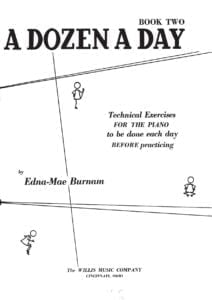 |
|
| A dozen A Day Book 3 Technical exercises for the piano |
 |
|
| A dozen A Day Book 4 Technical exercises for the piano |
 |
|
| A dozen A Day Mini Book Technical exercises for the piano |
 |
|
| A dozen Day Preparatory Book Technical exercises for the piano |
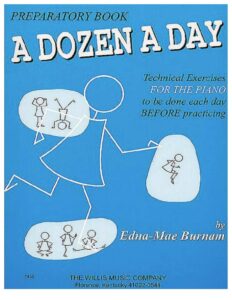 |
|
| A Farewell To Arms Love Theme From A Farewell To Arms film by Mario Nascimbene Francis Webster 1957 |
 |
|
| A Felicidade (Antonio Carlos Jobim) | ||
| A Festival Gathering Of Carols (Musescore File).mscz | ||
| A Fine Frenzy – Almost Lover |
 |
|
| A Fistful of Dollars (Ennio Morricone) | ||
| A Generative Theory Of Tonal Music by Fred Lerdahl and Ray Jackendoff (Book) |
 |
|
| A Guide To Guitar Chords by Curt Sheller |
 |
A Guide To Guitar Chords by Curt Sheller |
| A Guide To Musical Analysis by Nicholas Cook (Book) |
 |
|
| A Handbook Of Piano Playing (By Eric Hope) (1962) |
 |
|
| A Heart Full Of Love (Musescore File).mscz | ||
| A love suicide (Yutaka Minobe) | ||
| A Love Supreme (by Ashley Kahn) The story of john Coltrane’s signature album (Book) |
 |
|
| A Media Luz (Edgardo Donato) | ||
| A Modern Approach To Jazz Rock And Fusion For Guitar with Tablature |
 |
A Modern Approach To Jazz Rock And Fusion For Guitar |
| A Modern Method For Guitar (Berklee) 1 by William Leavitt |
 |
A Modern Method Berklee 1 |
| A Modern Method For Guitar (Berklee) 2 by William Leavitt |
 |
A Modern Method For Guitar (Berklee) 2 |
| A Modern Method For Guitar (Berklee) 3 by William Leavitt |
 |
A Modern Method For Guitar (Berklee) 3 |
| A MOZART REINCARNATED (Ennio Morricone) |
 |
|
| A Mozart Reincarnated by Ennio Morricone (Musescore File).mscz | ||
| A New Approach To Ear Training by Leo Kraft (BOOK) |
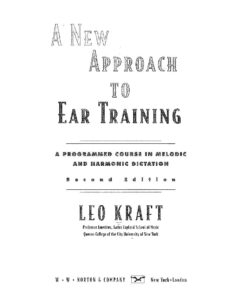 |
|
| A New Approach To Piano Technique (By Ruth A. Dickerson) (1962) |
 |
A new approach to piano technique |
| A Night In Tunisia – Dizzy Gillespie.mscz | ||
| A Pedal Method For The Piano (By Albert F Venino) (1893) |
 |
|
| A Popular Account Of Ancient Musical Instruments And Their Development by William Lynd (Book 1897) |
 |
|
| A Rockin’ Christmas Piano Vocal Guitar |
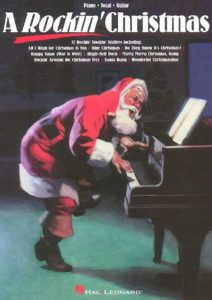 |
20 songs to sing on a rockin’ Christmas Eve Includes: All I Want for Christmas Is You * Grandma Got Run Over by a Reindeer * Happy Xmas (War Is Over) * Jingle-Bell Rock * Merry Merry Christmas Baby * Rockin’ Around the Christmas Tree * Santa Baby & moreRockin Christmas |
| A Single Man – George’s Waltz (Shigeru Umebayashi) | ||
| A Single Man – Stillness of the Mind (Abel Korzeniowski) | ||
| A Smooth Jazz Christmas – Mellow Seasonal Favorites for Piano arr. Roger House |
 |
A Smooth Jazz Christmas – Mellow Seasonal Favorites for Piano arr. Roger House |
| A Song For You – Leon Russell Ray Charles (Musescore File).mscz | ||
| A Star Is Born – Always Remember Us This Way Lady Gaga |
 |
|
| A Star Is Born – Shallow Lady Lady Gaga |
 |
|
| A Tale Of Two Sisters Ost – Epilogue Piano Solo |
 |
|
| A Thousand Years – Twilight OST (Christina Perri) | ||
| A Time For Love – Johnny Mandel |
 |
|
| A Time For Us – Guitar TABlature |
 |
|
| A Time For Us (Love Theme from Romeo and Juliet) Nino Rota |
 |
|
| A Time For Us (Romeo and Juliet OST) Nino Rota | ||
| A Touch Of Jazz 14 well-known hymns, gospel songs and contemporary praise songs by Wolaver Bill |
 |
A Touch Of Jazz 14 well-known hymns, gospel songs and contemporary praise songs by Wolaver Bill |
| A Tribute To Ella Fitzgerald Piano Vocal Guitar |
 |
A tribute to ELLA FITZGERALD |
| A Walk To Remember – Only Hope | ||
| A whiter shade of pale – Procul Harum | A whiter shade of pale – Procul Harum | |
| AaRON U-turn Lili Piano |
 |
|
| Ab Ovo – Joep Beving (Musescore File).mscz | ||
| Abba – Abba Gold – Greatest Hits |
 |
ABBA Gold Geatest Hits booksong sheet music |
| Abba – Chiquitita | ||
| Abba – Dancing Queen | ||
| Abba – Fernando | ||
| Abba – I Have A Dream | ||
| Abba – Like An Angel Passing Through My Room | ||
| Abba – Mamma Mia | ||
| Abba – Slipping Through My Fingers | ||
| Abba – Thank You For The Music | Abba-Thank-You-For-The-Music 1st page | |
| ABBA – Thank You For The Music (Piano Vocal Guitar) | ABBA – Thank You For The Music (Piano Vocal Guitar) | |
| ABBA – Thank You For the Music (Piano vocal Guitar) (Musescore File).mscz | ||
| Abba – Thank You For The Music Piano & vocal | Abba – Thank You For The Music-abba-satb | |
| Abba – The Winner Takes It All | ||
| ABBA Dancing Queen Easy Piano Solo |
 |
|
| ABBA Fernando (Piano Solo arr.) |
 |
|
| ABBA Fernando (Piano Solo arr.).mscz | ||
| ABBA Greatest Hits |
 |
ABBA GREATEST HITS SHEET MUSIC BOOK |
| ABBA I Have A Dream |
 |
|
| Abba The Very Best Vol 1 Easy Piano Hans Gunter Heumann Pop Classics For Piano |
 |
Abba The Very Best Vol 1 Easy Piano |
| Abba The Very Best Vol 2 Easy Piano Hans Gunter Heumann Pop Classics For Piano |
 |
Abba The Very Best Vol 2 Easy Piano |
| Abbey Lincoln Songbook |
 |
Abbey Lincoln Songbook |
| Abbey Lincoln Songbook Piano Vocal Guitar Chords |
 |
Abbey Lincoln Songbook Piano Vocal Guitar Chords |
| Abdullah Ibrahim – The Piano World Of |
 |
Abdullah Ibrahim, The Piano World Of |
| Abdullah Ibrahim The African Piano Of Abdullah Ibrahim Vol 1 |
 |
Abdullah Ibrahim The African Piano Of Abdullah Ibrahim Vol 1 |
| Abdullah Ibrahim The Wedding (piano solo transcription sheet music, partition) |
 |
|
| Abel Korzeniowski – Death Is My Heir (from Romeo and Juliet) |
 |
|
| ABRSM Jazz Piano Pieces Grade 1 to 5 |
 |
ABRSM Jazz Piano Pieces Grade 1 to 5 ABRSM Jazz Piano Pieces Grade 5ABRSM Jazz Piano Pieces Grade 5 |
| ABRSM Piano Exam Pieces Grade 1 (2016) |
 |
ABRSM Piano Exam Pieces Grade 1 (2016) |
| ABRSM Piano Scales, Arpeggios Grade 8 |
 |
|
| ABRSM Piano Scales, Arpeggios and broken chords Grade 1 |
 |
|
| ABRSM Piano Scales, Arpeggios and broken chords Grade 4 |
 |
ABRSM Piano Scales, Arpeggios and broken chords Grade 4 |
| ABRSM Piano Scales, Grade 2 A Guide for Students and Teachers | ABRSM Piano Scales, Grade 2 A Guide for Students and Teachers | |
| ABRSM – Time pieces for guitar vol. 1 |
 |
|
| ABRSM – Time pieces for guitar vol. 2 |
 |
|
| ABRSM 2017 18 Piano Exam Pieces Grade 1 |
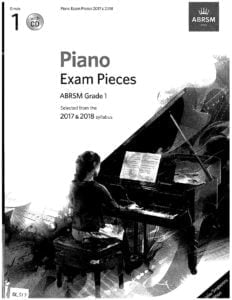 |
ABRSM 2017 18 Piano Exam Pieces Grade 1 |
| ABRSM 2017 18 Piano Exam Pieces Grade 2 |
 |
ABRSM 2017 18 Piano Exam Pieces Grade 2 |
| ABRSM 2017 18 Piano Exam Pieces Grade 3 |
 |
|
| ABRSM 2017 18 Piano Exam Pieces Grade 4 |
 |
|
| ABRSM 2017 18 Piano Exam Pieces Grade 5 |
 |
|
| ABRSM 2017 18 Piano Exam Pieces Grade 6 |
 |
|
| ABRSM 2017 18 Piano Exam Pieces Grade 7 |
 |
|
| ABRSM 2017 18 Piano Exam Pieces Grade 8 |
 |
|
| ABRSM 2021-2022 Piano Exam Pieces Grade 1 |
 |
|
| ABRSM 2021-2022 Piano Exam Pieces Grade 2 |
 |
|
| ABRSM 2021-2022 Piano Exam Pieces Grade 3 |
 |
|
| ABRSM 2021-2022 Piano Exam Pieces Grade 5 |
 |
|
| ABRSM 2021-2022 Piano Exam Pieces Grade 6 |
 |
|
| ABRSM 2021-2022 Piano Exam Pieces Grade 8 |
 |
|
| ABRSM 2021-2022 Piano Exam Pieces Initial Grade |
 |
ABRSM 2021-2022 Piano Exam Pieces Initial Grade |
| ABRSM Aural Training In Practice Book 1 Grades 1 to 3 |
 |
|
| ABRSM Aural Training In Practice Book 2 Grades 4 and 5 |
 |
|
| ABRSM Discovering Music Theory (Complete) Grades 1 to 5 Workbook by Simon Rushby (2020 Exams) |
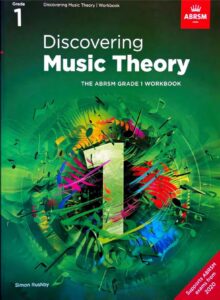 |
ABRSM Discovering Music Theory (Complete) Grades 1 to 5 Workbook by Simon Rushby (2020 Exams) contents |
| ABRSM Erster Verlust Grade 4 ABRSM Piano Exam Pieces 2021 & 2022 |
 |
|
| ABRSM Etude In A Minor – Dmitry Kabalevsky ABRSM Grade 4 Piano Exam Pieces 2021 & 2022 |
 |
|
| ABRSM Grade 2 – Inter-City Stomp byChristopher Norton From Microjazz Collection (Sheet Music) |
 |
|
| ABRSM Initial Grade Piano Exam Pieces 2023 2024 |
 |
|
| ABRSM Minuet and Trio D 41 No 21 – Franz Schubert ABRSM Grade 4 Piano Exam Pieces 2021 & 2022 |
 |
|
| ABRSM More Music Theory Sample Papers Grade 5 For New Format |
 |
|
| ABRSM Music Theory In Practice, Grade 1 (Eric Taylor) |
 |
|
| ABRSM Music Theory In Practice, Grade 2 (Eric Taylor) |
 |
|
| ABRSM Music Theory Past Papers Grade 1 2004 |
 |
|
| ABRSM Music Theory Past Papers Grade 4 2016 |
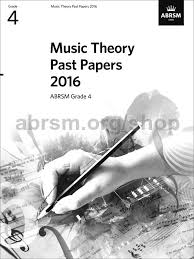 |
|
| ABRSM Music Theory Past Papers Grade 5 2012 |
 |
|
| ABRSM Music Theory Past Papers Grade 6 2013 |
 |
|
| ABRSM Nikki Iles Danny Boy ABRSM Piano Exam Grade 8 2023 Jazz Piano arr. inspired by Bill Evans |
 |
|
| ABRSM Nikki Iles Friends Book 1 Intermediate Jazz Pieces For Piano |
 |
ABRSM Nikki Iles Friends Book 1 Intermediate Jazz Pieces For Piano |
| ABRSM Nikki Iles Friends Book 2 Intermediate To Advanced Jazz Pieces For Piano |
 |
ABRSM Nikki Iles Friends Book 2 Intermediate To Advanced Jazz Pieces For Piano |
| ABRSM Nikki Iles The Elephant Parade ABRSM piano Exam |
 |
|
| ABRSM Piano 2025-2026 Grade 8 C3 A Nightingale Sang in Berkeley Square by Sherwin – Maschwitz |
 |
|
| ABRSM Piano Exam 2007-2008 Grade 3 |
 |
|
| ABRSM Piano Exam 2015-16 Grade 3 |
 |
ABRSM Piano Exam 2015-16 Grade 3 |
| ABRSM Piano Exam 2023-24 Grade 3 C3 THE ENTERTAINER – SCOTT JOPLIN |
 |
